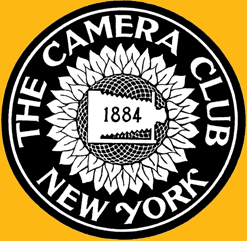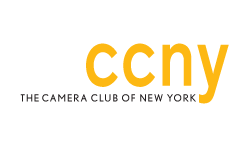 |
Since 1884, The Camera Club of New York has been a home for photographers to develop their craft, providing both a hands-on working facility and a collegial environment for discussion and the exchange of ideas. One of the oldest arts organizations in the New York metropolitan area, the Camera Club has nurtured talented photographers in a wide range of disciplines, including portraiture, photojournalism, fashion, street photography, advertising work, documentary, and fine art.
Alfred Stieglitz, considered by many to be the father of American photography, was an early member, and his groundbreaking publication, Camera Notes, documented the Club’s activities while advocating for the inclusion of photography in the catalog of fine arts. He advanced this position by exhibiting photographs in his revolutionary gallery “291”, alongside the work of modernist painters and sculptors. Some of his important images, including his “Equivalent” series moved photography into the realm of abstraction, further bolstering his claim. Having a prestigious reputation, the Camera Club was often seen as a venue for introducing new advances and techniques in the photographic sphere. The autochrome process (an early form of color photography), as well as X-Ray photography was vetted at the Club in their infancy, and as cameras and photographic chemistry evolved, corporate representatives or Club members brought new products to the attention of Club members.
Through the years, many of photography’s great names have passed through the Club’s doors, either as members or lecturers, including Edward Steichen, Paul Strand, Gertrude Kasebier, Berenice Abbott, Richard Avedon, and photographic historian, Beaumont Newhall.
Today the Camera Club of New York continues its long tradition of welcoming both photographers and devotees of photography to its offerings --- memberships, classes, lectures, and exhibitions.
|
 |
|
 |

|
|

